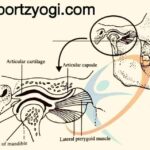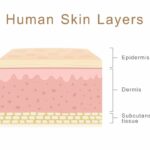Classification of Bones in the Human Body
Classification of bones in the human body- Bones are the basis of human bodybuilding. Different types of bones give them a special shape in the body. The bone-made structure of the body is called the skeleton. It contains about 206 bones of different sizes and shapes. At the time of birth, there are 300 bones in children, which are gradually joined together and are converted into adult skeletons whose number is 206. The various bones of the body are tied together by strong fibrous tissue. A layer of cartilage present on the tip of the bones that is jointed remains. The ligament acts to position the bones and keep them in place, which binds the bones tightly at the joint. Muscles also work to shape the body with the help of bones, which cover the bones from above. these are the Classification of bones in the human body
There are two major kinds of bone, TRABECULAR BONES (spongy) and CORTICAL BONES. Trabecular bone gives supporting strength to the ends of the weight-bearing bone. The cortical (solid) bone on the outside forms the shaft of the long bone


COMPOSITION OF BONES
About 75% of solids and 25% of water substances are found in a fully developed adult bone. There are two types of substance found in the body- ORGANIC and INORGANIC SUBSTANCE, Which are found in the space matrix between the bones.
In adult humans, ORGANIC SUBSTANCE in bones is 30%, Which contains ossein, myukoprotine, and keratin. The organic matrix is primarily made up of protein collagen, providing pliability and flexibility to the bone. Collagen has a mass of 10% of the total adult bone. The mineral component is composed of hydroxyapatite, an insoluble salt of calcium and phosphorus. About 65% of the adult bone mass is hydroxyapatite. Human bones also contain some amount of sodium, magnesium, and bicarbonate.
The INORGANIC SUBSTANCE is about 45% of human bones, In which calcium, magnesium, and phosphorus are the main elements. Sodium, potassium, and chlorine are also found in small amounts. And some amount of iron, lithium also exists. Due to these inorganic materials, hardness and hardness are maintained in the bones. Whereas flexibility resides with the organic matter.
DEVELOPMENT OF BONES
The process of the formation of bones is called ossification. Three types of bone cells, called osteoblast, astrocytes, and osteoclast participate in bone formation such as development, growth, and remodeling of bone. All three types of cells remain active during growth. The osteoblast is a bone-forming cell, the osteocytes are called mature bone cells and the osteoclast breaks down and reabsorbs the bone so that the form and proportion of the bone remain the same.


According to the composition and shape of the human body, the following five types of bones are there:
- LONG BONES
- SHORT BONES
- FLAT BONES
- IRREGULAR BONES
- SESAMOID BONES
LONG BONE:-
The bone which is more in length than the width is called long bone. Long bones are mainly located in the appendicular skeleton and lower limbs such as fibula, tibia, metatarsal, and phalanges and the upper limbs include radius, ulna, humerus, metacarpals, and phalanges. It acts like a lever, which is pulled by contraction of muscles, by this lever-action, there are movements in the body.
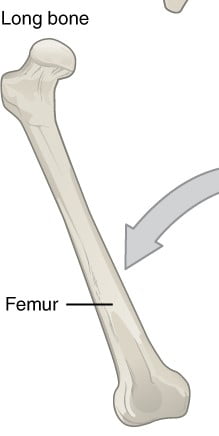

There is a diaphysis in the central part of the long bones and two epiphyses on both ends. The shaft is made up of dense bone tissue. After the microscopic examination of its transverse section, a hollow space is found in the middle of it, which is called the marrow cavity or the mandibular cavities: filled with yellow bone marrow. Both ends are made of spongy bone and are covered by a thin fold of dense bone, which has red bone marrow inside it, which maintains a sufficient number of red blood vessels in the bloodstream. Long bones are covered with a strong covering of fibrous tissue, called the periosteum.
SHORT BONES:-
This type of bone is almost equal in thickness, width, and length, but is irregular in shape. Wrist and heel bones belong to this. Most of their body is made of spongy bone tissue. Over which a thin dense bone tissue coating is placed. Small bones are found only in the wrists in carpal bones and the ankle’s tarsal bones, where only limited movement is required.
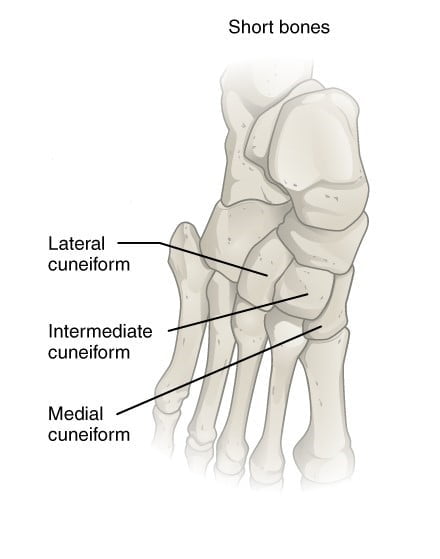

FLAT BONES:-
Flat bones are actually thin or often slightly bent. These types of bones include the sternum, scapulae, and ribs {Thoracic cage} and cranial {nasal, parietal, frontal, lacrimal, occipital} bones. These types of bones contain dense bone tissue, which contains red bone marrow. These bones are found in those places where the bone needs to protect the internal organs like the heart, brain, and pelvic organs.
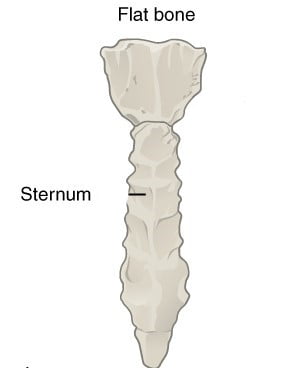

IRREGULAR BONES:-
These types of bones do not fall into any suitable category; they have no fixed shape which protects the internal organ such as – bones of vertebrae which protect the spine, some bones of the face, some bones of the skull, and bones of the hip Protects the pelvic cavity. It is covered by a thin fold of dense bone and is made of spongy bone.


SESAMOID BONES:-
They are also called planar bones because their shape is similar to sesame seeds. This bone develops in tendons that are found near a joint such as the knee, ankle, wrist, hand, etc. Its main function is to protect tendons from stress. This can be understood by the example of the patella which protects tendons like a kneecap. This type of bone increases the joint’s work efficiency.


WHAT IS BONE MARROW?
Cellulovuscular tissue is present in the central medullary canal of the bone and in the interstitial spaces of the bone. These are called bone marrow. These are two types:-
REDBONE MARROW
Redbone marrow produces red blood cells and the hemoglobin present in them, so it is more of red blood cells, due to which it gets red color.
YELLOW BONWE MARROW
Yellow bone marrow contains fatter and blood vessels as well as reticular tissue, due to which its color is yellow. White blood cells are also made in it. Red blood cells are vinified by reticular endothelial cells. Platelets are also produced in the bone marrow. Antibodies are also formed by the reticular endothelial cells of the bone marrow. Plasma protein is produced by the bone marrow.
Classification of bones in the human body
Read more about Every type of joint in the body just click the link below
https://www.sportzyogi.com/types-of-joints-in-the-body/


